I was out on two photo excursions earlier this week, and the first made me distinctly aware that something was wrong with my autofocus. Well, mine was all right, but the camera’s was off noticeably, for damn near every frame. I provide some examples:

This is full-frame, and while it’s taken at 600mm, the osprey (Pandion haliaetus) wasn’t that far away – obviously, if the frame is nearly filled with the wingspread. We’ll go in closer on the same frame:
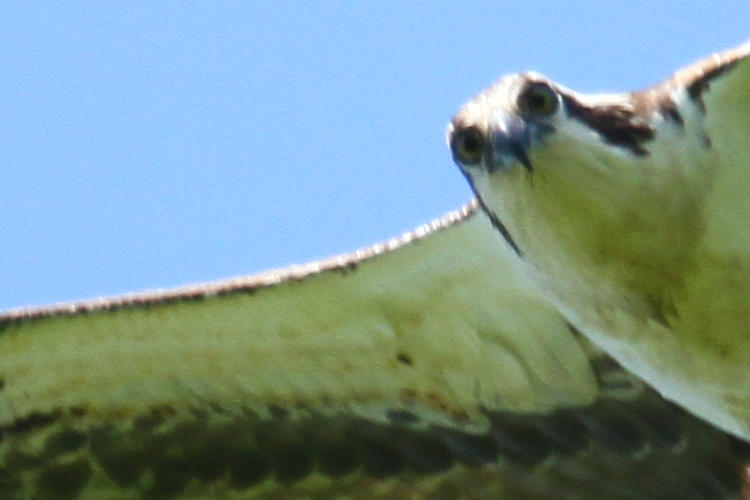
This is full-resolution, and the lack of ‘streaks,” elongated details, tell me that this is a focus issue and not a motion issue. While I can have stability problems when birds pass right overhead, because aiming straight up is difficult for this old man, there’s really no reason for this result.
It showed in plenty of other frames, too:
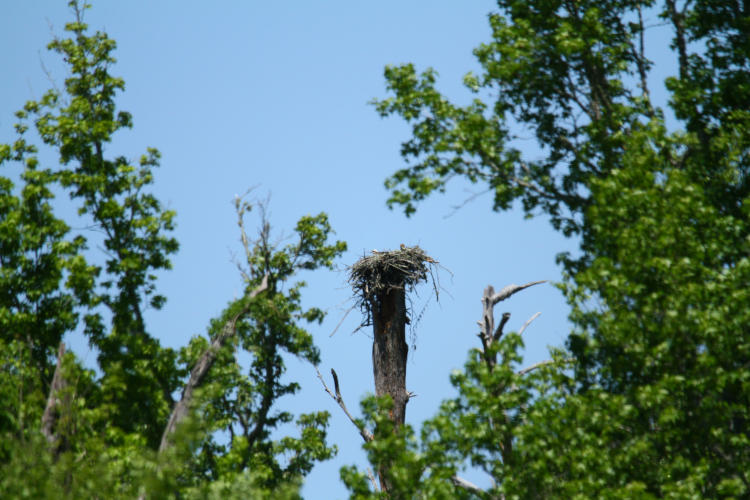
This is full-frame, what I could see in the viewfinder, and while there are branches much closer that are crowding the autofocus point in the center, I was reasonably stable. Cropped tighter:
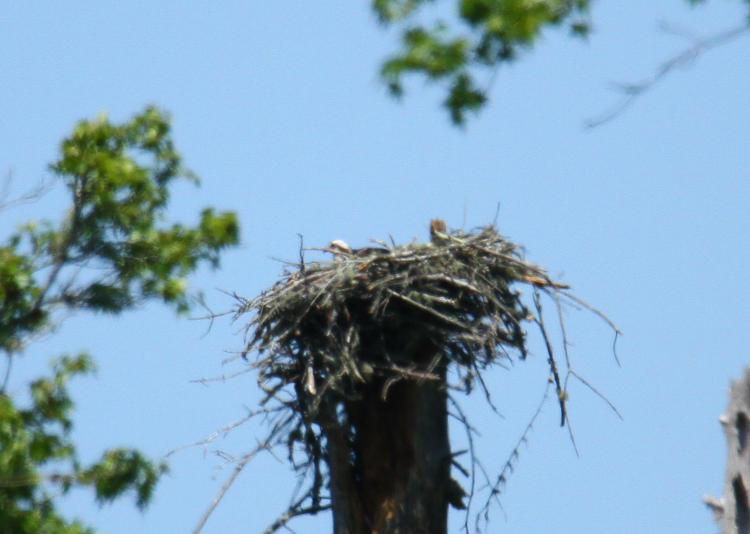
You can see that the AF wasn’t locking onto the surrounding clutter either, being further out of focus than the main subject. Not cool. This was especially annoying in that I could have had some decent shots of dad bringing in more nesting material (I’m quite sure mom was already on the eggs,) but same crappy results:
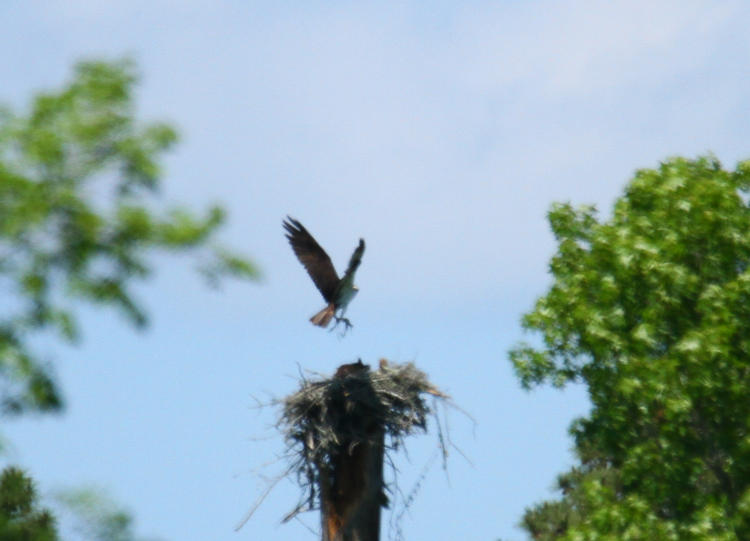
So the next morning I sat down with the camera and did some specific cleaning routines, as well as making a few changes to the autofocus settings in the Custom Functions, and initial tests (on subjects admittedly not moving as much as my normal fare,) were promising. The acid test was the next outing later that day, and things were hugely improved:

This is full-frame again, and you can see that the juvenile bald eagle (Haliaeetus leucocephalus) is significantly smaller in the frame, easier for the AF to miss, but no issues this time. Closer:
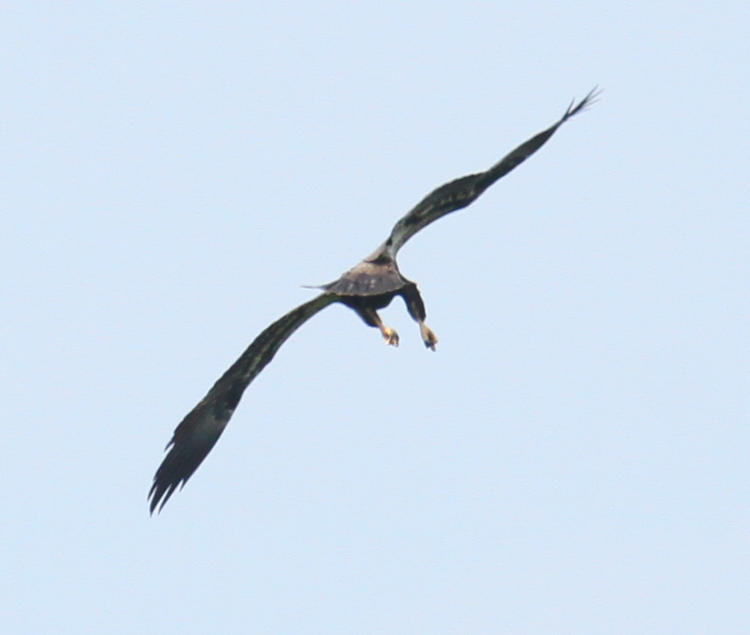
That’s more like it! A subsequent post will go into what I did to the camera to improve matters, but for now, some more pics from the outing.
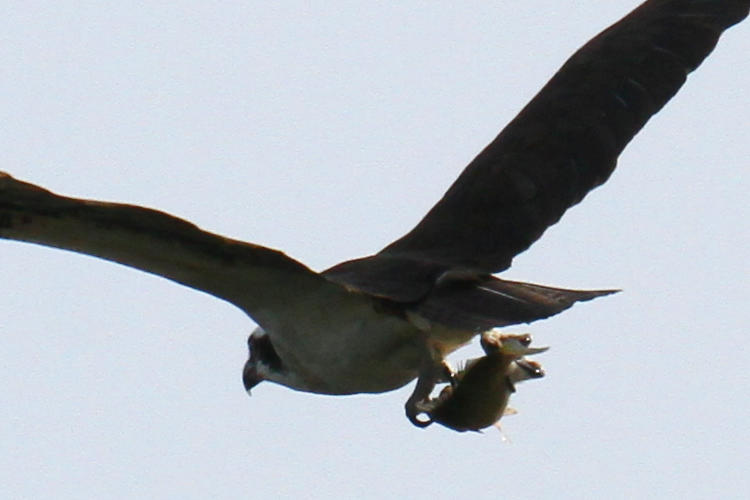
This is full resolution, of another osprey that was further off than the first above, and if you look closely you can even see water drops still falling from the fish. This one, by the way, was the only one (of several spotted that day) that captured anything while I watched, and was pretty accommodating in flying quite close past as it climbed out, though at its closest it was obscured by branches. It circled around and found a perch with great light to tackle its meal.
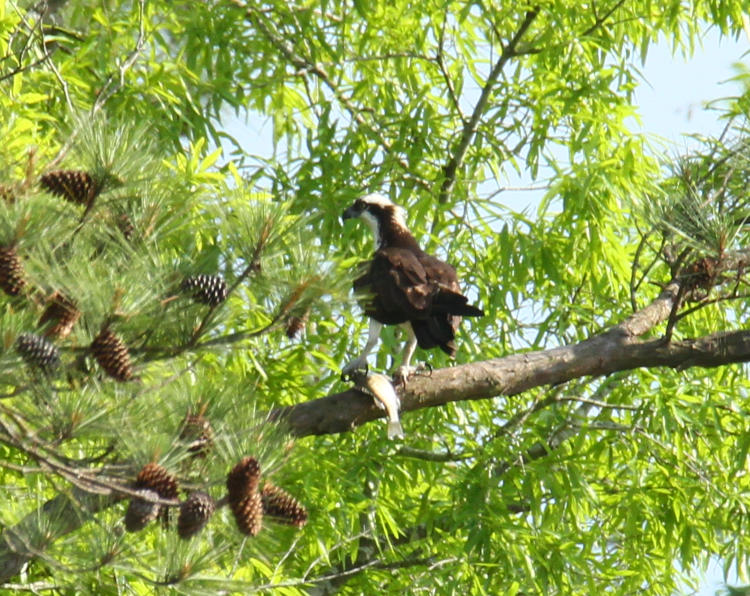
This is cropped tighter as the osprey chose a tree that was still a bit distant, and even with all the surrounding clutter the AF was fixed on the osprey nicely. I started working closer, but the osprey realized someone was fishing from a small boat too close by (in a pool that I’ve never seen a boat within,) and decided that there were quieter places to eat, leaving almost immediately with its capture. Ah well.
Most of the birds from this outing remained distant and/or doing little of interest, but way off, I spotted an altercation and started firing off the frames, not even sure what I was seeing.

Before you say anything, these are all tight crops of something extremely distant; I have no way of pinning down an accurate distance given that they were over open water, but I feel comfortable saying that it was in excess of 700 meters anyway. This is a pair of bald eagles, and in the viewfinder I considered the one with the white head and tail an adult, but close examination of these frames show some distinct blotches throughout the plumage, indicating to me that it had just reached its fourth year and was sporting brand new ‘adult’ plumage. The other isn’t seen clearly enough to pin down, but I’m geusstimating it was only in its second year.
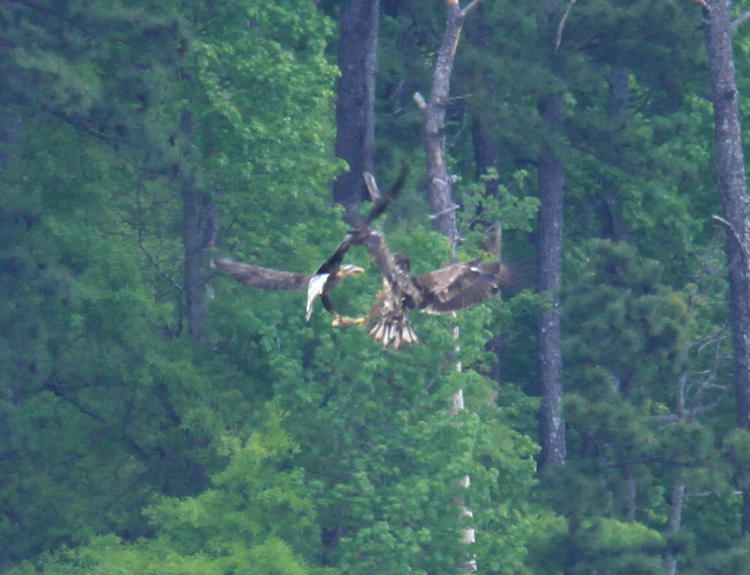
What was clear enough, however, was that the older one was heading to a perch (maybe even a nest, though I’m skeptical) with its fish when the younger one decided that it deserved the fish more, and a significant aerial ballet ensued from the dispute. I fired off 37 frames over 28 seconds, and in that time they had no fewer than six midair altercations – each of the frames that you see here are separate bouts with short flights in between.
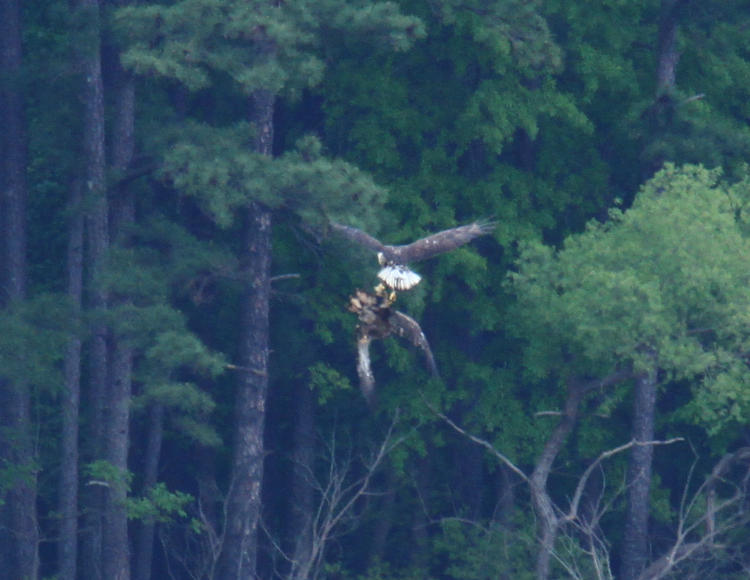
Yes, the attempted thief is actually upside-down in this frame, trying to yank the fish away from its rightful captor. I’d heard about this kind of behavior many years ago, but the first I’d ever seen it was only a month ago, and I’m hoping to get it a lot closer and in better detail. Video would also be nice, but I’d have to be specifically aiming for that just to have the rig to keep the camera stable enough. We’ll see what happens.
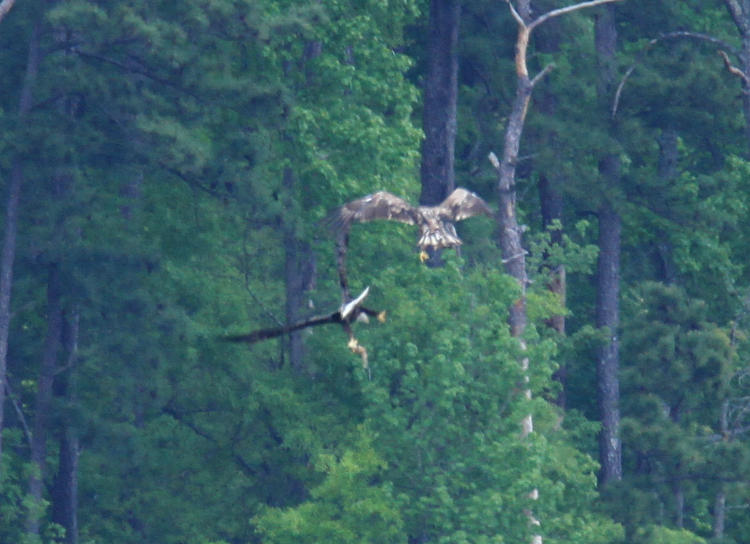
To the best of my knowledge, the thief was never successful; the original owner still has the fish in this frame, at least. It is entirely possible that the eagle seen further up banking towards the tree (which was on a small island, almost in line and splitting the distance to these pics) was the same one trying to wrest the meal away. Curiously, the amount of effort expended here was way beyond what would have been required to capture its own fish, but I doubt eagles think in terms of working efficiently and net-loss scenarios. Likely it just saw a passing fish and thought, I should snag that, regardless of who was already in possession.
About ten minutes later, another eagle cruised past, still pretty far off but nowhere near as much.

Definitely just transitioning into adulthood, so four years old now – you can still see dark feathers from the juvenile stage in the white areas, as well as paler patches on what should be uniformly deep brown wings. Same one as above? It’s possible, given the direction that it came from and the time that had passed, enough to finish off a half-shredded fish, but that’s only speculation.
Overall, however, eagles were spotted seven or eight separate times, so definitely an active area. I have suspicions of where a nest might be, but it doesn’t appear to be accessible from land and I’m not taking serious camera gear out in the kayak, so I doubt much will come from this suspicion.
Soon to follow will be a shorter post about the things that I did to improve autofocus – I decided to break things up since this was already long enough.




















































